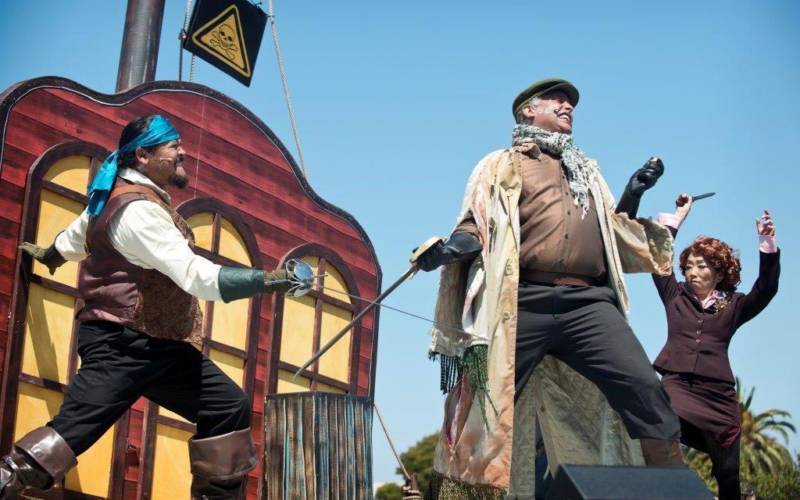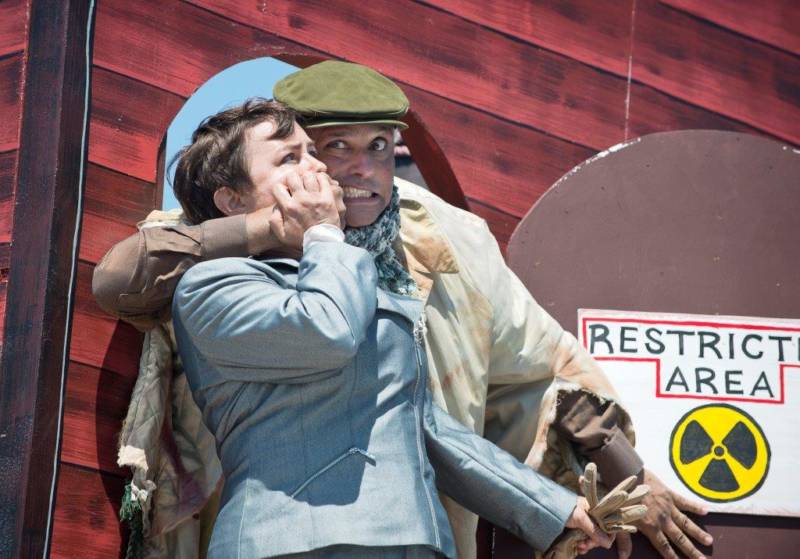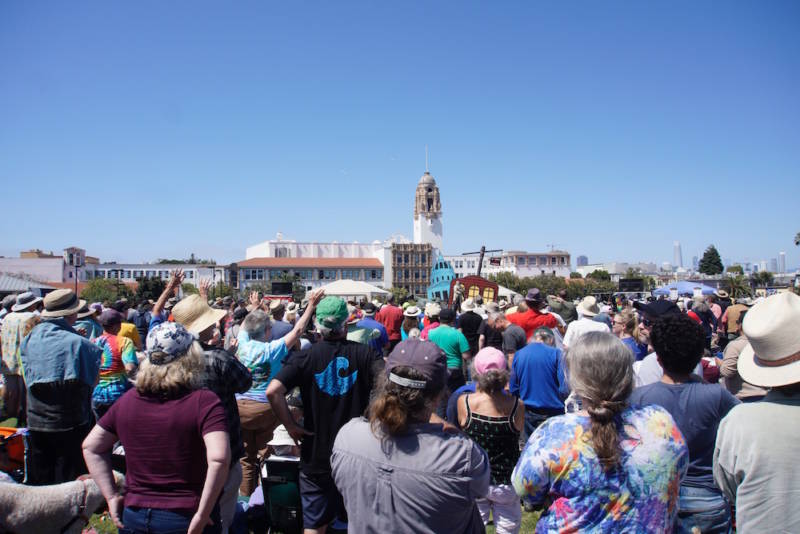To celebrate our holidays, religious or secular, we frequently rely on tradition to guide us. Whether it’s dreidel for Chanukah, dyed eggs (or drag queens) for Easter, or lion dancing for the Lunar New Year, tradition acts as a framework holding a disparate group of people together. And any given holiday might generate different traditions for different systems of belief: Thanksgiving could mean a big family meal, a chance to shop for bargain electronics, a chance to buy nothing, or a chance to reflect on Native American rights.
For many Bay Area residents, the Fourth of July means opening day for the San Francisco Mime Troupe’s summer touring season.
Belying the fog that will later roll in and obscure the fireworks, the sky is often blue and bright for the Mime Troupe’s opening day. The crowd really begins to trickle in around noon, and by the 2pm showtime, the hillside facing the tennis courts on 18th Street is full of bodies. Young bodies, older bodies, multiracial bodies. Child bodies and dog bodies. Folks circulate through the crowd with petitions, pamphlets, programs. As I always do, I feel as if I know at least a quarter of the attendees—if not as friends, then as reputations. Organizers and educators. Actors and artists. Union members and cooperative workers. A great deal of time at a Mime Troupe show is spent in greeting folks whom I maybe haven’t seen since last year’s show. Frequently there is relief in the greeting—a “you’re-still-here-and-I’m-still-here-therefore-we-are-all-still-here” kind of acknowledgement. It’s all part of the ritual. Tradition.
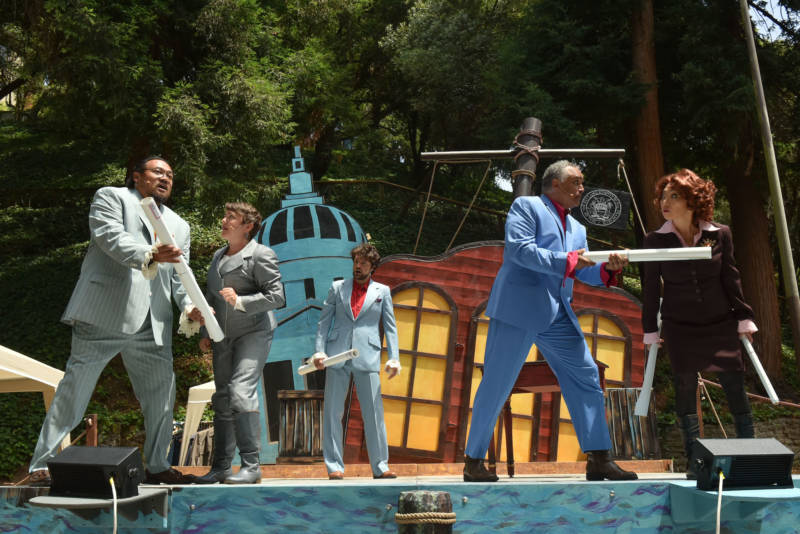
The San Francisco Mime Troupe has had plenty of time to cultivate its July Fourth tradition, considering that this summer marks their 60th anniversary—some 57 of which have been spent in public parks. In the 70s, when the NEA still funded tours, they criss-crossed the country with their left-wing messaging, garnering a handful of Obies and a Tony along the way. Collectively run since 1970, the Mime Troupe publicly committed themselves to being racially diverse in 1974 and multi-generational in the nineties, long before “EDI” became a LORT buzzword, and their current membership actively reflects it.
Theirs is a specific kind of success story, one proving that it’s possible to run a company well into the 21st century with collective principles and leftist ideals. A company where people stay for two, three, or 30 years—and each get an equal vote. A company whose commitment to not taking corporate money, and reliance on on-again, off-again NEA funding has kept it in a perpetual state of brokeness for decades. A company whose commitment to touring still takes them to some very unlikely hamlets—Nevada City, Davis, San Jose—despite not having the means to travel the Midwest as in earlier decades. A company whose current audience comes as much for the experience of being their audience as they do for the actual show. Tradition.
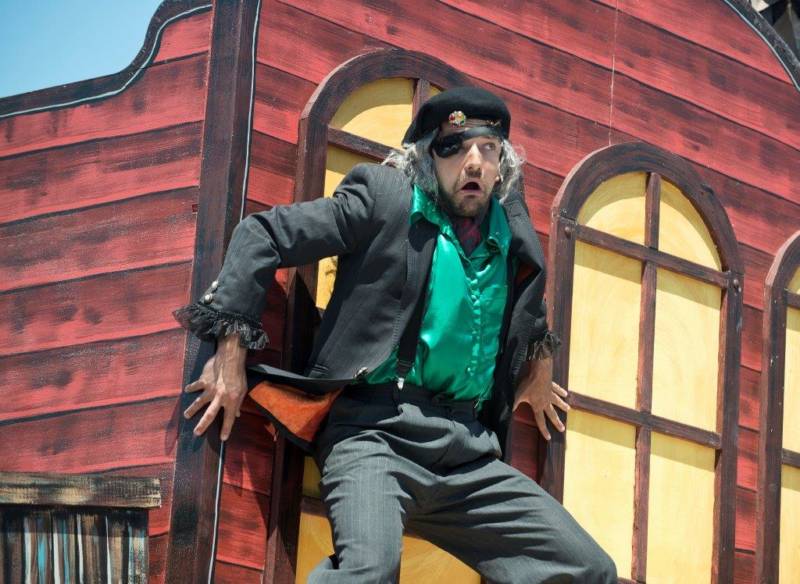
The Mime Troupe, who still have to add to their swag the tagline “not that kind of mime,” actually specialize in flamboyant verbosity mixed with music. They frequently take on a single issue and attempt to flesh it out with a mix of slapstick, wonk-splaining, and showtunes. Their flexible, able cast performs multiple roles with quick costume changes and a willing suspension of disbelief on the part of the audience, and for every issue they bring to the forefront, there are a dozen others that feel equally urgent crowding behind the scenes. This inability to respond in the moment to every pressing cause can sometimes make a Mime Troupe show feel behind the times, even when they’re addressing very current concerns. It’s less street theater, and more theater-that-is-performed-on-the-streets, and in this way they are as constricted by their chosen script as any more conventional theater performed indoors might be.
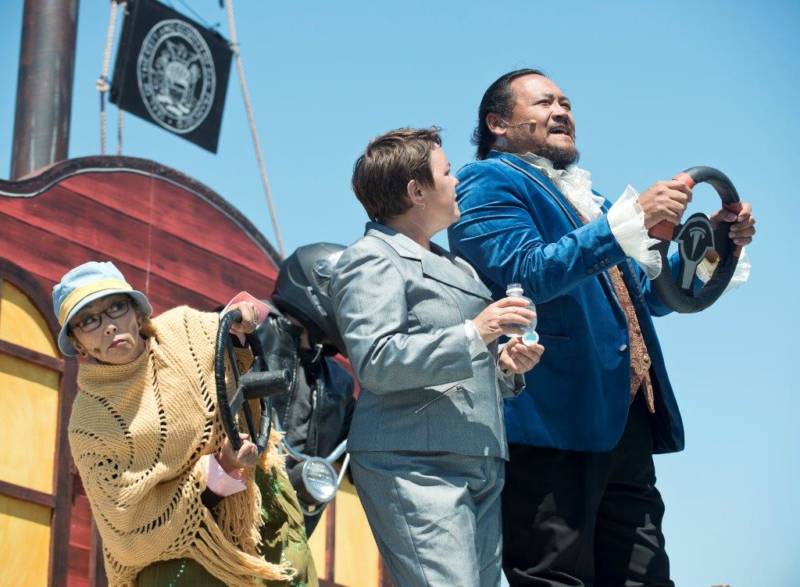
This year’s show, Treasure Island, written and directed by multiple members, is no different in that regard. They take to task San Francisco’s love affair with developers, in this production likened to pirates, complete with “arrrghs,” frilly shirts, callbacks to Robert Louis Stevenson’s high-seas adventure tale, and a great, Carla Pantoja-choreographed sword fight. And although the crowd initially can’t decide if it’s supposed to cheer or boo the first development referenced in the play—high-rise condos at 16th and Valencia (hint, you boo)—they soon come around to the Mime Troupe’s POV, as a whole slew of injustices are revealed in the greater fight for affordable housing, mostly on and off our very own Treasure Island.
